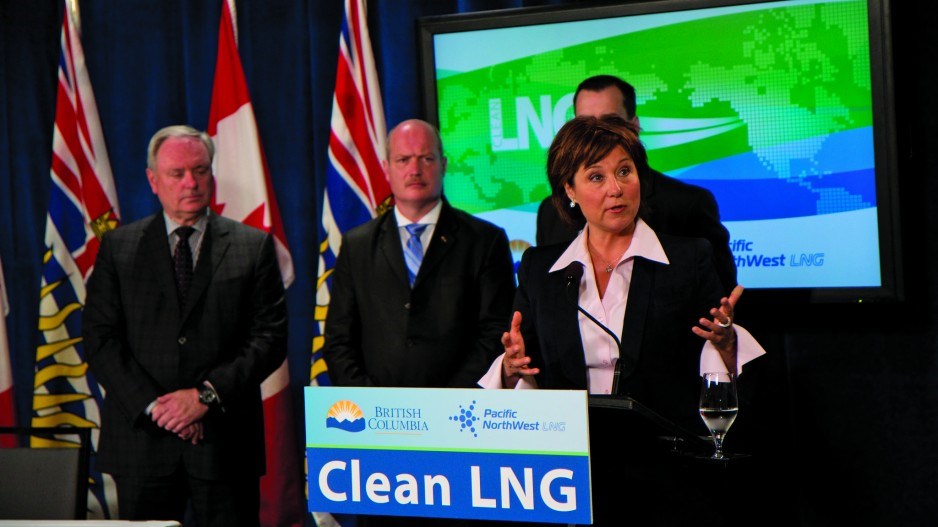Any day now, the B.C. government hopes to see a green light from Malaysia on a $36 billion investment that could blaze the trail for a new liquefied natural gas (LNG) industry.
But that optimism was tempered last week with the release of a new International Energy Agency forecast that suggests the timing for any new LNG projects is not good.
On May 21, one day after the B.C. government announced the final two pieces of a fiscal package for B.C.’s nascent LNG industry, Petronas announced a “conditional” final investment decision on the Pacific NorthWest LNG project would be made within weeks.
The project does not yet have an environmental certificate and faces potential opposition from the Lax Kw’alaams Band.
One big hurdle that has been cleared, however, is a fiscal framework. An agreement signed with Petronas May 20 sets the terms for taxation and royalties.
“We look at this as a long-term project, and really that’s where the stabilization and surety that comes along with the [tax and royalty agreements] fits into this,” said Michael Culbert, president of Pacific NorthWest LNG. “So we’re moving forward to take a – hopefully – positive commercial decision in the near future.”
The agreement includes a long-term royalty structure designed to “smooth” out natural gas price fluctuations and ensure predictable revenues for the government.
The other is a development agreement that essentially locks in current tax rates, including the carbon tax, and provides for penalties, should future governments decide to change those rates or layer on new taxes.
They were the last two pieces of the fiscal puzzle, which also includes previously announced tax rates and credits tailored specifically for the LNG industry by provincial and federal governments.
Under the new royalty agreement, the B.C. government will forgo any windfalls that might result from future spikes in North American natural gas prices.
Critics say that, in a desperate attempt to salvage a nascent LNG industry in a period of energy price uncertainty, the B.C. government is giving away the farm by agreeing to lower taxes and royalty rates.
The same criticisms were made when the Alberta government, in an effort to attract major oil companies to develop the oilsands, agreed to lower royalty rates, said Brad Hayes, president of Petrel Robertson Consulting Ltd.
“At the time, what it meant was that the government collected very, very minimal royalties from oilsands, but they did get the projects going and they did get the things built,” he said. “And now that the capital cost from some of the major oilsands projects are paid off, the government of Alberta is seeing very substantial royalty income.”
But those royalties have been slashed in recent months as a result of a 50% drop in oil prices. It’s that kind of volatility the B.C. government says its new royalty structure will guard against.
While B.C. will forgo any windfalls when prices spike, it will also be insulated when prices or production levels fall.
“It means we will get a predictable amount every year into the provincial budget,” said Premier Christy Clark.



